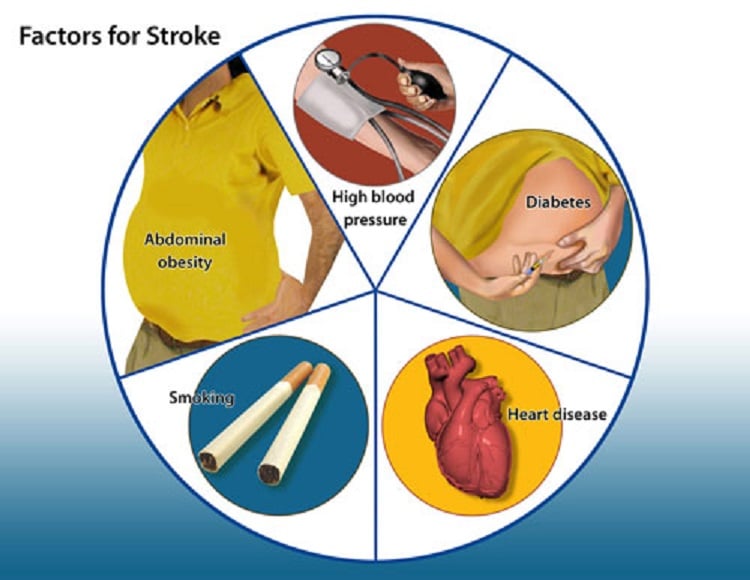What’s the bond between diabetes and stroke?
Diabetes can improve your risk for a lot of health problems, including stroke. Generally, individuals with diabetes are 1.5 occasions more prone to possess a stroke than men and women without diabetes.

Diabetes affects our body’s capability to create insulin or utilize it correctly. Since insulin plays a huge role in pulling glucose into cells in the blood stream, individuals with diabetes are frequently playing an excessive amount of sugar within their bloodstream. With time, this excess sugar can lead towards the buildup of clots or fats inside vessels supplying bloodstream towards the neck and brain. This method is called coronary artery disease.
If these deposits grow, they are able to result in a narrowing from the circulation system wall or perhaps a complete blockage. When bloodstream flow for your brain stops unconditionally, a stroke occurs.
Exactly what is a stroke?
Stroke is really a symptom in which bloodstream vessels within the brain are broken. Strokes are characterised by a few factors, including how big the broken circulation system, whereby the mind bloodstream vessels happen to be broken, and just what event really caused the harm.
The primary kinds of stroke are ischemic stroke, hemorrhagic stroke, and transient ischemic attack (TIA).
Ischemic stroke
Ischemic stroke is easily the most everyday sort of stroke. It happens when an artery that supplies oxygen-wealthy bloodstream towards the mental abilities are blocked, most frequently with a bloodstream clot. About 87 percentTrusted Supply of strokes are ischemic strokes, based on the Cdc and Prevention.
Hemorrhagic stroke
Hemorrhagic stroke takes place when an artery within the brain leaks bloodstream or ruptures. Roughly 15 % of strokes are hemorrhagic strokes, based on the National Stroke Association. Hemorrhagic strokes can be quite serious and have the effect of about 40 % of stroke-related deaths.
Transient ischemic attack (TIA)
A TIA may also be known as a ministroke since the bloodstream flow towards the mental abilities are blocked for any shorter period of time and doesn’t lead to permanent nerve injuries. A TIA is ischemic, and could last from the minute to many hrs – before the clogged artery reopens by itself. You shouldn’t neglected, and you ought to contemplate it an alert. People frequently make reference to a TIA like a “warning stroke.”
Do you know the signs and symptoms of the stroke?
Recognizing the twelve signs and signs and symptoms of the stroke is an important initial step for you to get someone help before it’s far too late. In order to help people remember how you can recognize a stroke, the American Stroke Association endorses the mnemonic FAST, which means:
- face drooping
- arm weakness
- speech difficulty
- time for you to call 911 or perhaps your local emergency services
Other signs and symptoms that may signal a stroke include sudden:
numbness or weakness from the face or even the legs and arms, particularly if it’s only somewhere
- confusion
- trouble understanding speech
- difficulty seeing in either eyes
- dizziness
- a loss of revenue of balance or coordination
- trouble walking
a serious headache without known reason
If you feel you’re experiencing a stroke, call 911 or perhaps your local emergency services immediately. A stroke is really a existence-threatening condition.
Fast action after stroke signs and symptoms
If you are getting a stroke, you might experience one or multiple signs and symptoms. Although you’re prone to recognize odd signs and symptoms or seem like something isn’t quite right together with your body, you might not realize you’ve got a serious issue until it’s far too late.
Stroke signs and symptoms can be cultivated gradually over hrs or days. For those who have a ministroke, also referred to as transient ischemic attack (TIA), signs and symptoms are temporary in most cases improve within hrs. Within this situation, you might blame sudden signs and symptoms on stress, a migraine, or nerve problems.
Any signs or signs and symptoms of stroke require further analysis with a physician. When you get towards the hospital within three hrs from the first signs and symptoms of the ischemic stroke, your physician can provide you with a medicine to dissolve thrombus and restore bloodstream flow for your brain. Fast action improves the chances of you recovering fully following a stroke. Additionally, it reduces the seriousness of disabilities that may derive from a stroke.
An easy FAST test will help you identify a stroke in yourself yet others.
Face. Ask the individual to smile. Search for indications of drooping somewhere from the face.
Arms. Ask the individual to boost their arms. Locate a downward drift in a single arm.
Speech. Ask the individual to repeat an expression without slurring. For instance, you might have them say “The early bird catches the earthworm.”
Time. Waste virtually no time. Immediately call the local emergency services should you or somebody shows indications of a stroke.
